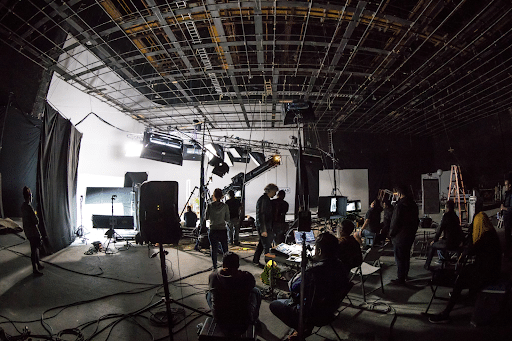Programs in media studies are essential for developing the next wave of journalists, storytellers, and media professionals. To give students a well-rounded education, it is crucial to integrate film production within these curricula as the media landscape continues to change. This article aims to improve students’ abilities, encourage their creativity, and prepare them for the ever-changing media landscape by examining the best methods for incorporating film production into the media studies curriculum.
1. Hands-On Learning
One of the fundamental principles for successfully integrating film production into media studies is promoting hands-on learning experiences. Theoretical knowledge is valuable, but practical skills are equally important in the media industry. Create opportunities for students to engage in actual film production, allowing them to apply concepts learned in the classroom to real-world scenarios. This can include film shoots, editing projects, and collaborative exercises that mimic industry practices.
Students often struggle with time constraints, leaving little room to delve into practical work such as shooting for films and editing projects. In such situations, students can turn to professional assistance and outsource assignments from ukwritings.com. By providing quality, custom-written academic assignments on time, such companies allow students to free up their schedules for their other responsibilities. Selecting well-written assignments allows dutiful learners to fulfil their academic obligations and free up time to focus on acquiring critical financial literacy skills.
2. Access to Professional Equipment
Provide cutting-edge equipment and resources for media studies programs in the film business. Giving students access to professional-grade cameras, lighting gear, and editing software is essential for a realistic learning environment. To make sure students are comfortable with the tools they will meet in their future employment – where they will have to create compelling content every day – work with industry partners or make investments in the newest equipment.
3. Industry-Experienced Faculty
Invite experts from the field to teach in the classroom. Teachers with experience in film production can encourage prospective filmmakers, impart useful information, and provide insightful advice. Their practical experience can bridge academia and industry, providing students with a more thorough understanding of the potential and challenges associated with the film production sector.
4. Cross-Disciplinary Collaboration
Encourage collaboration between students from various disciplines within the media studies program. Film production is a collaborative effort that involves individuals with diverse skills, including writing, cinematography, sound design, and editing. Foster an environment where students from different specialities can work together on film projects, simulating the interdisciplinary nature of the media industry.
5. Project-Based Assessments
Implement project-based assessments that challenge students to apply their knowledge and skills in a practical setting. Assignments can include producing short films, documentaries, or promotional videos. This approach assesses their understanding of film production and prepares them for the type of work they will encounter in their future careers.
6. Film Festivals and Screenings
Organize film festivals and screenings to showcase students’ work. This provides a platform for them to exhibit their creativity and gain exposure to a wider audience. Inviting industry professionals to these events can create networking opportunities and offer valuable feedback to students. Celebrating their accomplishments through public screenings also instils a sense of pride and motivation.
7. Internship Programs
Establish partnerships with film production companies, studios, or media organizations to create internship programs. Practical experience in a professional setting is invaluable for students’ career development. Internships provide opportunities to apply classroom learning to real-world scenarios, build industry connections, and gain insights into the day-to-day operations of the film industry. Additionally, these internship programs can serve as a bridge for students to transition seamlessly from the academic environment to the professional realm, fostering a smoother integration into film production’s fast-paced and dynamic world.
8. Diversity and Inclusion
Promote diversity and inclusion in film production. Encourage students to tell stories from different perspectives, ensuring that the content reflects the rich tapestry of human experiences. This practice prepares students for the increasingly diverse media landscape and fosters a more inclusive and representative film industry. Moreover, embracing diversity in film production enriches storytelling by capturing a multitude of voices and cultivates an industry that resonates with audiences globally, fostering a deeper understanding and appreciation of the diverse cultures and narratives that make up our interconnected world.
9. Digital Literacy and New Technologies
Integrate lessons on digital literacy and emerging technologies in film production. The media industry constantly evolves, with new tools and techniques emerging regularly. Ensure that students are proficient in traditional filmmaking methods and familiar with the latest advancements, such as virtual reality, augmented reality, and interactive storytelling.
10. Professional Development Workshops
Organize workshops and seminars featuring industry professionals. These events can cover various topics, from technical skills to industry trends and career development. Exposure to professionals who have navigated the challenges of the film industry firsthand can provide valuable insights and inspiration to aspiring filmmakers.
Concluding Thoughts
To sum up, programs for media studies must incorporate film production to adequately prepare students for the fast-paced, cutthroat nature of the media business. Through the adoption of experiential learning, professional equipment access, cooperation, and diversity promotion, educators may guarantee that their students graduate prepared for success in the rapidly changing media and film production field. By putting these best practices into reality, we can enhance the educational process and help produce a new generation of innovative and well-rounded media professionals.



